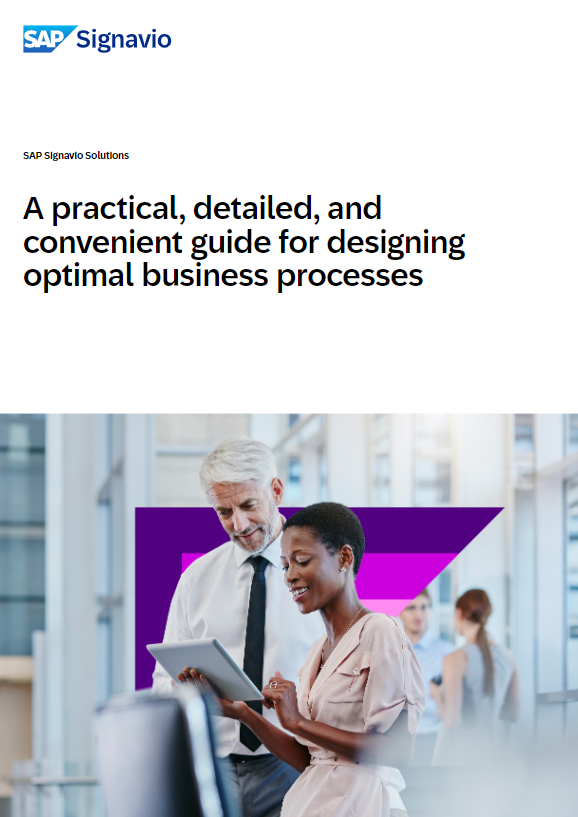Business process lifecycle
To manage business processes successfully, it’s important to follow a structured lifecycle. This lifecycle provides a step-by-step framework for discovering, analyzing, designing, executing, and improving processes over time.
Each phase builds on the last and supports continuous alignment with business strategy.
1. Discovery: Understand what’s happening today
The discovery phase focuses on gaining full visibility into how your organization operates right now. It’s the foundation for all future improvements—without understanding what exists, it’s impossible to know what needs to change.
During discovery, teams work to:
- Identify key end-to-end processes across departments
- Document tasks, roles, decisions, and inputs/outputs
- Map out dependencies and system touchpoints
- Highlight pain points and areas of inconsistency
- Use tools like process mining or workshops to visualize workflows
This phase should bring together business users and IT to co-create a shared view of current operations. The goal isn’t to redesign yet—it’s to understand the “as-is” landscape as accurately and comprehensively as possible. Tools like SAP Signavio Process Intelligence or interviews with stakeholders can be helpful here.
Key takeaway: Discovery ensures your future improvements are grounded in real operational data—not assumptions.
2. Analysis: Identify inefficiencies and risks
Once the current state is captured, the analysis phase focuses on evaluating process performance to find gaps, bottlenecks, and opportunities.
Key activities include:
- Reviewing KPIs such as cycle time, cost per transaction, and error rates
- Identifying bottlenecks, delays, rework, and handoff issues
- Uncovering compliance risks or manual workarounds
- Comparing how different teams or regions execute the same process
- Using data from ERP or CRM logs to confirm actual process behavior
This phase is critical for prioritization. Not every process needs transformation—only those that impact business outcomes, compliance, or cost. Analysis tools like heat maps, dashboards, and benchmarking reports help surface these insights.
Key takeaway: Objective analysis gives you a fact-based view of where change will deliver the most value.
3. Design and planning: Define the ideal future state
Design phase is where you transition from understanding problems to planning solutions. Based on the insights gathered, you now reimagine how each process should work.
Design and planning typically involve:
- Mapping “to-be” workflows that are faster, leaner, or more automated
- Clarifying roles and responsibilities to remove ambiguity
- Reducing handoffs or steps that don’t add value
- Planning technology updates or system integrations
- Aligning process goals with strategic business objectives
- Setting KPIs for the new process version
Collaborating with frontline teams during design ensures feasibility. Modeling techniques like BPMN can be used to create simulations of the future state, which can then be tested for viability before rollout.
Key takeaway: A well-designed process is clear, scalable, and built for continuous improvement—not just a one-time fix.
4. Implementation: Execute and manage change
This is the execution phase—where your designs are rolled out into daily business operations. But it’s not just about technology; implementation also includes the people side of change.
Activities during implementation include:
- Launching redesigned processes within BPM platforms
- Configuring system workflows and integrations
- Training employees and enabling process owners
- Communicating changes clearly across departments
- Managing resistance, adoption, and feedback loops
A phased approach or pilot rollout is often useful, especially for complex or cross-functional processes. Be sure to track early adoption and address barriers quickly.
Change management plays a huge role here. Even a perfect design can fail if it’s not accepted or understood by the people executing it.
Key takeaway: Successful implementation requires equal focus on systems, communication, and user adoption.
5. Optimization: Measure, learn, and improve
Once live, processes must be continuously monitored and refined. The optimization phase is where short-term execution turns into long-term improvement.
In this phase, organizations:
- Track real-time performance using dashboards and KPIs
- Gather feedback from users and stakeholders
- Identify recurring issues or new bottlenecks
- Implement targeted changes or automation
- Adjust to evolving business conditions or regulatory needs
Continuous improvement frameworks—such as PDCA (Plan-Do-Check-Act)—can be applied here. Process mining can also be used to compare expected vs. actual behavior and recommend further refinements.
The most successful companies treat this phase as ongoing, not optional. Process governance structures, regular reviews, and performance metrics all support sustained gains.
Key takeaway: Optimization keeps processes aligned with business needs even as goals, people, or systems change.
Conclusion
Well-managed business processes are essential in today’s competitive landscape. They support data-driven decisions, align teams with strategy, and reduce operational risk.
Thanks to advanced BPM software, you no longer have to be an expert to design and manage effective workflows. With the right tools, businesses can move from fragmented workflows to integrated, outcome-driven operations.






